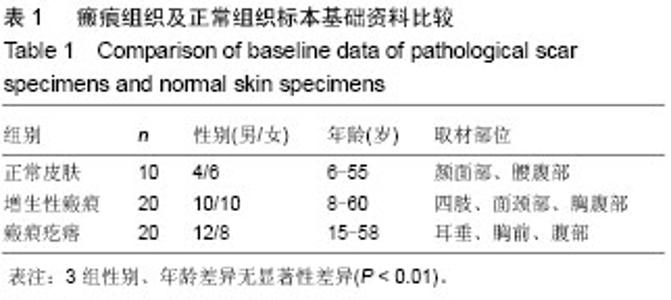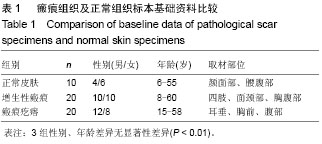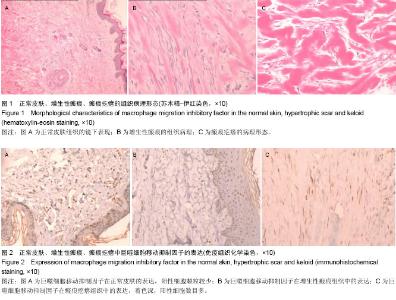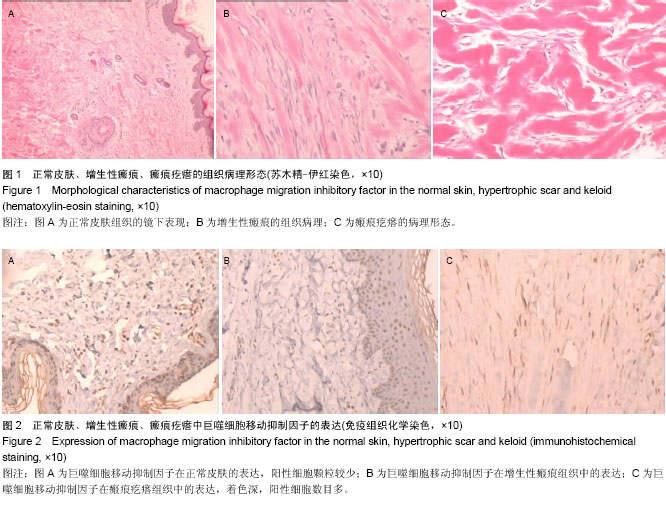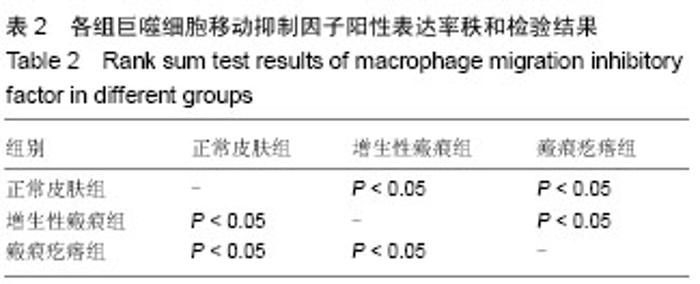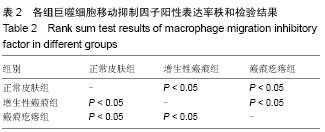| [1] 王炜.整形外科学[M].杭州:浙江科技出版社,1999:430-431.
[2] Bloom BR, Bennett B. Mechanism of a reaction in vitro associated withdelayed-type hypersensitivity.Science.1996; 153(1):80-82.
[3] Takahashi N, Nishihira J,Sato Y,et al. Involvementofmacrophagemigration inhibitory factor(MIF)in the mechanism of tumor cellgrowth.MolMed.1998; 4(1): 707-714.
[4] Yang Y, Cheng XR, Zhang GR.Autocrine motility factor receptor is involved in the process of learning and memory in the central nervous system.Behav Brain Res.2012;229(2):412-418.
[5] 张军波,牙祖蒙.肿瘤侵犯相关蛋白自分泌运动因子在瘢痕疙瘩中的表达[J].中国组织工程研究,2012,16(20):3363:3366.
[6] Baumann M, Kappl A, Lang T.Thediagnosticvalidityof theserumtumormarker phosphohexoseisomerase (PHI) in patients with gastrointestinal, kidney, and breast cancer. Cancer Invest.1990;8(3-4):351-356.
[7] 安纲,蔡景龙,潘博,等.瘢痕疙瘩TβRⅡ数量和亚细胞分布的研究[J].中国美容医学,2006,15(1):11 -13.
[8] 宗宪磊,姜笃银,蔡景龙.瘢痕疙瘩的肿瘤特性研究进展[J].中国美容整形外科杂志,2007,18(5):393-397.
[9] 蔡施霞,余细勇.巨噬细胞移动抑制因子促进新生微血管生成[J].中国动脉硬化杂志,2006,14(11):949-952.
[10] 段朝霞,陈魁君,张洁元.小鼠血管内皮细胞的培养、鉴定及巨噬细胞移动抑制因子对其促增殖作用的研究[J].解放军医药杂志, 2013,25(1):10-13.
[11] 单志新,余细勇,林秋雄.巨噬细胞移动抑制因子诱导血管生成相关基因的表达[J].中山大学学报,2005,26(6):617-621.
[12] Salem A, Assaf M, Helmy A, et al. Role of vascular endothelial growth factor in keloids: a clinicopathologic study.Int J Dermatol.2009; 48(10):1071-1077.
[13] Santos L, Hall P, Metz C,et al.Role of macrophage migration inhibitory factor (MIF) in murine antigen-induced arthritis: interaction with glucocorticoids.ClinExpImmunol.2001;123(2): 309-314.
[14] 李振彬,杨志霞,徐铮,等.活动期类风湿关节炎血清MIF与TNF-α、IL-1β表达的相关性研究[J]中国临床医学,2008,15(4):558-560.
[15] 严瀚,刘恩志,周汉城,等.类风湿关节炎中巨噬细胞移动抑制子对内皮细胞功能及血管内皮生长因子的影响[J].中华关节外科杂志,2013,7(3):373-377.
[16] 陈伟英,李广然,梁伟,等.血清巨噬细胞移动抑制因子水平与SLE活动性的关系[J].新医学,2004,35(11):667-668,688.
[17] Sasaki S, Nishihira J, Ishibashi T, at al. Transgene of MIF induces podocyte injury and progressive mesangial sclerosis in the mouse kidney.Kidney Int.2004;65(2):469-481.
[18] 肖华,张平.巨噬细胞移动抑制因子在肺纤维化大鼠肺组织中的表达[J].医学研究杂志,2009,38(3):40-42. |
